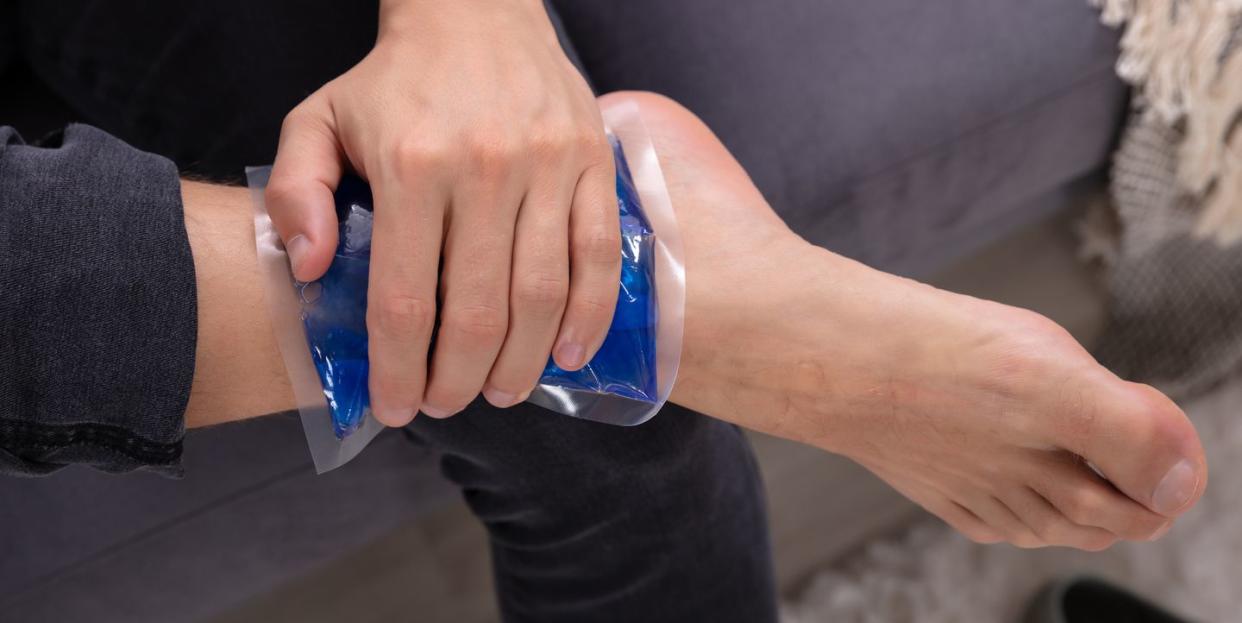Using the Proper Temperature Therapy Can Heal Your Body Faster

Like tea or yoga, pain relief comes in more than one temperature. You reach for a bag of frozen peas from the freezer if you twist your ankle. You might even take a clue from your chiropractor and use a heating pad to relax that knot in your right shoulder. But what about when your shins start aching from too many miles cross-training on the pavement, or when you pull a muscle while mountain biking? Should you ice or heat a strained muscle or other such injury?
No cold pack or heated blanket can repair a sprained ankle or mend a torn tendon, but both warming and chilling a painful area can help minor injuries heal faster and temper pain. “That’s important, because if you feel better, I believe you’re going to heal better,” says Sonu Ahluwalia, M.D., clinical chief of orthopedic surgery at Cedars Sinai Medical Center. In part, the link appears psychological, but the mending comes from physiological factors too: reduce the ache and you may move more, increasing healing blood flow to the area.
So when should you reach for frozen peas versus the heating pad? Follow our guide below to choose the right degree of relief.
When to chill out
Ice quickly constricts the blood vessels in your skin and underlying tissues, decreasing blood flow, says Jessica Hettler, PT, a physical therapist at Hospital for Special Surgery in New York City. All the chemical reactions in the area slow to a crawl, including those that contribute to swelling and inflammation.
To use cold therapy safely, apply a gel pack, bag of crushed ice, or even frozen vegetables for 15 to 20 minutes every hour or two, all day if possible. (Hettler recommends toting a gel pack to work.) Place a moist towel or dishcloth in between the ice and your skin to prevent frostbite. And if you go the veggie route, mark the bag so no one cooks it later—thawing and re-freezing can spoil the food.
How to use ice:
Within the first 24 to 48 hours after an injury. Whether you sprained an ankle or pulled a muscle, you’ll reap the most reward from ice’s inflammation-fighting properties at this stage, Dr. Ahluwalia says. “Allowing inflammation to run rampant can lead to increased pain, increased swelling, and the loss of strength and mobility,” Hettler says.
Immediately after a tough workout. If you think you overdid it, icing now can prevent soreness later by slowing the immediate inflammatory response, Hettler says.
On injuries that feel warm when you touch them. This is a sign of active infection or inflammation; heat could worsen your condition at this stage.
While pregnant, especially near your abdominal area. Hot packs in this spot could increase your core temperature and harm your baby. In extreme cases, a high core temperature could even contribute to birth defects—so check with your doctor if you have questions
When to heat things up
Heat operates in the opposite way, opening up blood vessels and increasing blood flow, delivering nutrients that allow cramping muscles to relax. Hot packs also fight pain by altering the messages your sensory nerves send back to your brain, Hettler says.
You can use a moist heat pack warmed in water, electric heating blanket, or a popcorn-type pack that goes in the microwave. Place a towel or cloth over your skin first to avoid burning. Leave it on no more than 20 minutes, and let your skin cool completely before reapplying. And never go to sleep with a heating pad (or ice pack, for that matter), Hettler warns.
How to use heat:
A day or two after a tough workout. In this case, skip the heating pad and create warmth from within through gentle movement—say, a few minutes of walking or easy cycling. “A hot pack is not going to get down to the big meaty layer of muscle that needs it,” Hettler says.
For chronic soreness, such as low back pain. Warm showers or baths can prove especially helpful by releasing the tension from continually contracted muscles, Dr. Ahluwalia notes.
On an injury after the first few days. At this point, inflammation has decreased and increasing blood flow can provide healing nutrients. There’s no set time that you have to switch, Hettler says—if ice still provides relief, stick with it, but if its effectiveness fades, then heat could help
This article originally appeared on Prevention.com
You Might Also Like

